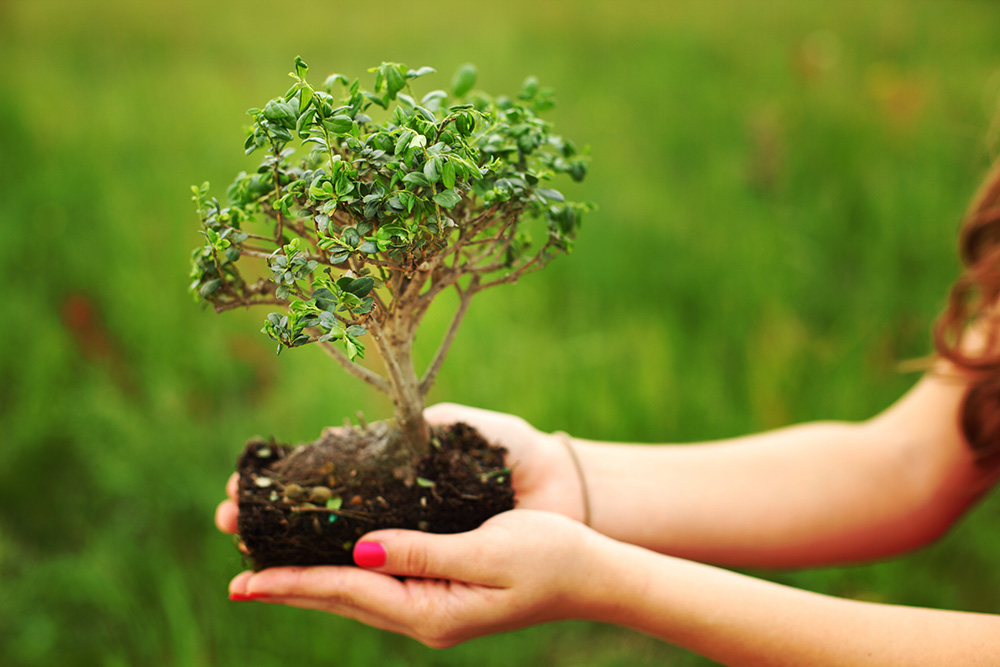Generally speaking, there are five things to consider while browsing nursery plants.

First, check to see if the roots appear to be strong enough to provide a solid foundation. The tree’s roots should radiate out and entice you to follow the lines of the tree up to the base of the trunk, providing a sense of stability. Good roots draw your eyes from bottom to top.
Once you find a suitable root structure, move up to examine the trunk of the tree. The style of the tree will dictate which qualities you will look for in the trunk.
Except on some rare occasions, a thick, gradually tapering base is preferred. Those contemplating a formal upright design should seek out a straight trunk with as little curvature as possible. All others should study the “movement” of the tree.
Search for a solid trunk that twists and curves in ways that intrigue and present a sense of motion, enticing the viewer to investigate further. Trace the line of the main trunk from the bottom up to the highest point, which will most likely the the apex. Does this path suggest an interesting design to you? Does it remind you of a tree? Do you begin to envision the potential of the plant?
After contemplating these things, begin examining the branching pattern. Most nurseries do not train their stock to be bonsai, so be on the look out for thicker branches at the base and gradually thinning branches nearing the top of the plant. The main structure of your tree will take shape from these branches. Allow your imagination to move and balance the trunk.
At this point in time, a design should be evolving in your mind. Does the tree in before you suggest a particular style? Are you able to see a calm windswept design, or a dramatic cascading pattern? Take into consideration the kind of shaping or growth will be needed before the tree is able to emerge? Are you able to see an image that others cannot within that bundle of branches and leaves or needles? What will you do to bring forth that image?
Finally, after this is done, you must make certain that the plant is vibrant and healthy. White fibrous roots suggest good health and are a great indicator of how the tree will grow, so pull the plant from the pot examine the perimeter of the soil. Do the leaves present a colorful, vibrant image? Does it have any new growth? Does the plant appear to be in good health?
The signs of good health and growth will gradually become more apparent as you acquire more experience. Any suspicion that the tree is unhealthy should be heeded by simply moving on to another tree. Try to select a hearty plant that will withstand the sometimes tough process of potting, pruning and wiring.
An attractive tree bark will lend the illusion of maturity and should be sought out in any bonsai plant. A desirable trunk has considerable girth while remaining proportional to the rest of the tree and gradually tapering upward. Occasionally, you will find that one or two of the branches need to be trimmed in order the emphasize a desired attribute and balance the appearance. Often, the upper portion of the root structure is left exposed in order to exude an aura of age. The branches of the plant should appear to be balanced as though floating in the air. Opposing branches should not line up perfectly across the trunk of the tree.
The branches give dimension to and create the basic form of the tree. These same branches should be arranged harmoniously while avoiding unsightly gaps in the bonsai. By viewing the tree from above, flaws can easily be spotted. Branches toward the apex should not overshadow the branches toward the base. Some plants make better bonsai than others. All the components, from roots to the leaves, and from the branches to the flowers should be in perfect proportion to the rest of the plant in order to offer the illusion of a mature tree.
Any plant chosen for bonsai should produce small leaves, or at least be able to begin producing small leaves when groomed under the bonsai culture. Large leaves will detract from the plant and appear to be out of proportion if used for bonsai.
